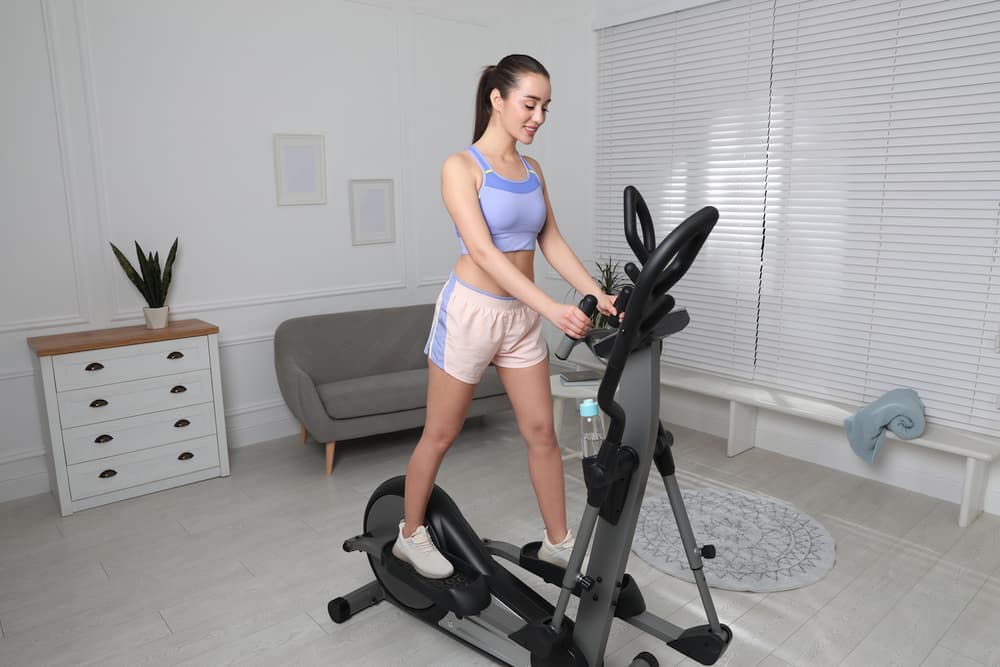Frequent road running can be harsh on the joints, increasing your risk of injury. Research suggests that elliptical for runners is a viable solution. But how so, and can elliptical make you a better runner?
Benefits of the Elliptical for Runners
Using the elliptical trainer is an excellent addition to anyone’s workout routine or marathon training.
Aside from amping up calorie burn and strengthening leg muscles, this gym equipment also plays a role in injury prevention and recovery.
Here are some specific advantages of elliptical training for runners and the studies that support them.
Reduces Impact for Injury Prevention
Runners put their joints under stress daily or weekly. And repeatedly working the same muscles can result in overload injuries, like stress fracture and plantar fasciitis.
Experts recommend cross-training or adding other exercises, like biking or aerobics, to resolve the problem.
Working out with an elliptical is also another good alternative.
You see, with an elliptical, your feet never leave the pedals. That means you can rest your legs and feet yet continue training and building muscles.
Mayo Clinic explained this benefit further by comparing elliptical and treadmill use.
Moreover, incorporating the elliptical for runners’ training can stimulate other muscles not used when running to avoid imbalances.
TIP: Aside from elliptical training, post-workout recovery tools can also protect runners from injury.
Mimics Running to Target Similar Muscles
Actual running and elliptical training work out similar muscles: the calves, hips, quads, hamstrings and glutes.
What’s more, you can adjust the incline and resistance level of the elliptical to simulate outdoor surfaces and slopes.
So, even if you take a break from running, the joint-friendly elliptical ensures your main performing muscles are not missing out.
Elliptical for runners with moveable handles also exercises your arm, shoulders and core for a full-body workout.
You can pedal the elliptical in reverse to target other muscles not involved in running, too.
A study in 2010 also noted that elliptical use has a similar oxygen consumption and energy expenditure with a treadmill workout.
This finding suggests that an elliptical machine is an effective cross-training alternative for runners.

Keeps You Active for Faster Recovery
According to the Better Health Channel, one in every three recreational runners will experience a running-related injury at some point in their life.
Back, groin, skin and soft tissue injuries are also likely, aside from hurting your lower legs.
Common causes are overtraining, poor running technique and impact on hard surfaces.
Naturally, you cannot continue your training or running routine when injured. But an elliptical trainer can help.
Of course, working out despite an injury depends on the severity and your doctor.
But with a go-signal, using the elliptical machine for runners can keep them active while recovering.
Specifically, short runs on the elliptical boost their heart rate to stay fit while mimicking the running form.
These also prep the injured runner to start running again by continuously building up strength.
Once fully recovered, incorporating the elliptical in your routine from now on will protect you from injury recurrence, too.
Time, after all, is of the essence in athletic training. And inevitable running injuries can only get in the way.
With an elliptical, you can speed up the recovery process, get back on track immediately and perform.
TIP: Refer to this Harvard Medical School article to learn more about sports injuries, treatment and rehabilitation.
Boosts Your Strength and Stamina
Athletes need both strength and stamina to perform well in any sport. And the elliptical for runners can do just that through its changeable features.
Adjusting the incline ramp, for instance, allow runners to perform climbing workouts.
Boosting elliptical exercise intensity is simple with the adjustable resistance levels, too.
In turn, runners get to develop the core and leg strength they need. They also enhance their commonly weak muscle groups in the process.
Workout diversity, after all, is one way to broaden your running fitness level, range of motion and sports abilities.

Helps Improve Your Form
I’ve mentioned in a few articles that the key to mastering an exercise is to learn the basics and observe proper form. It’s the same with any sport.
This tip not only improves your performance but also protects your body from unnecessary strain. And runners can turn to elliptical trainers to achieve this.
With the right elliptical setting, you can train how fast and big your strides should be.
Incorporating elliptical workouts into your training will eventually develop a muscular movement pattern that you can mirror in outdoor running.
The best part: you get to improve your running form and stride rate with reduced body impact and energy expenditure.
TIP: Read these elliptical workout tips to make the most of your cross-training.
See also the proper form of how to use an elliptical.
Takeaway
Without a doubt, an elliptical machine for runners is key to optimum performance.
With it, you can alternate elliptical and outdoor runs in a week to give your legs and feet enough rest days.
You can avoid injuries and keep on training that way, too.
And should you get injured, you can use the elliptical for active recovery.
This machine also ensures you work out both your upper and lower body and get the stamina boost needed for a race.
Remember, exercise can become boring if you do the same thing every day.
So, spice up your running routine and start cross-training with the best elliptical machine!
- What Are the Advantages and Disadvantages of Folding Treadmills? - 11 March 2025
- Can You Use a Massage Gun When Pregnant? - 10 March 2025
- What is the Best Pre-Run Food? - 6 March 2025
